Product
Firmness
Score
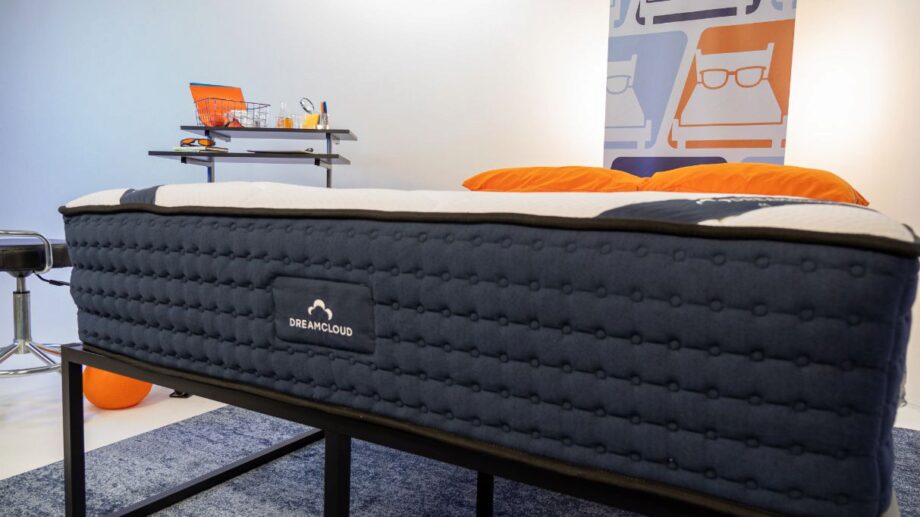
Product
Firmness
Score
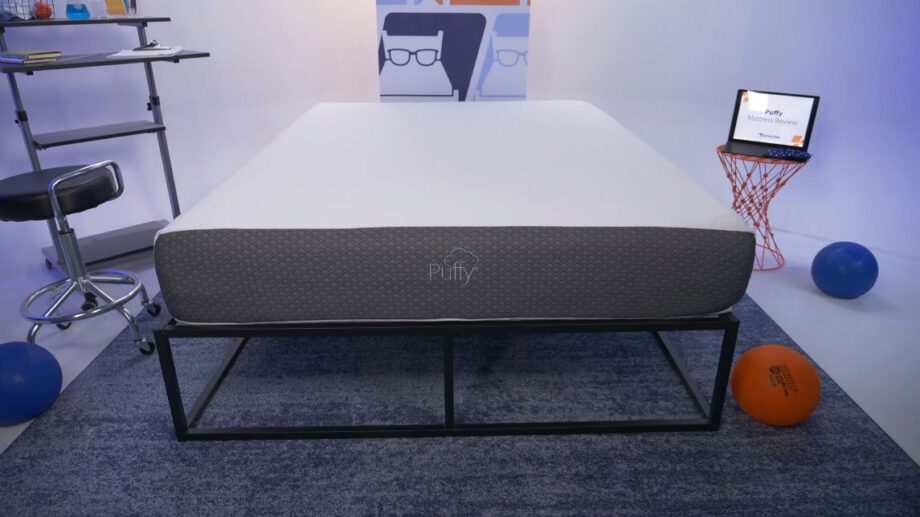
Disclosure: By clicking on the product links in this article, Mattress Nerd may receive a commission fee at no cost to you, the reader. Read full disclosure statement.
At Mattress Nerd, we just had to get under the hood of these two ethereal-sounding mattresses, the DreamCloud and Puffy. We tore them open to see inside (don’t try that at home) and ran some tests to give you the facts. Keep reading to determine if the luxury DreamCloud delivers on its promises or if the more affordable Puffy is the mattress of your dreams.


With names like DreamCloud and Puffy, you might be picturing ultra-soft, cushy mattress surfaces. And you’d be partially right. The DreamCloud’s cashmere blended cover and gel-infused foam layer are soft, but the coil layer provides a medium-firm base layer for support. Puffy has a true neutral feel meaning it really is quite soft, but most sleepers (weighing under 230 lbs) will still find sufficient support under the cushiony top.
| DreamCloud is best for… | Puffy is best for… |
| Couples | Shoppers on a Budget |
| Hot Sleepers | Lightweight Sleepers |
| Back Sleepers | Side Sleepers |
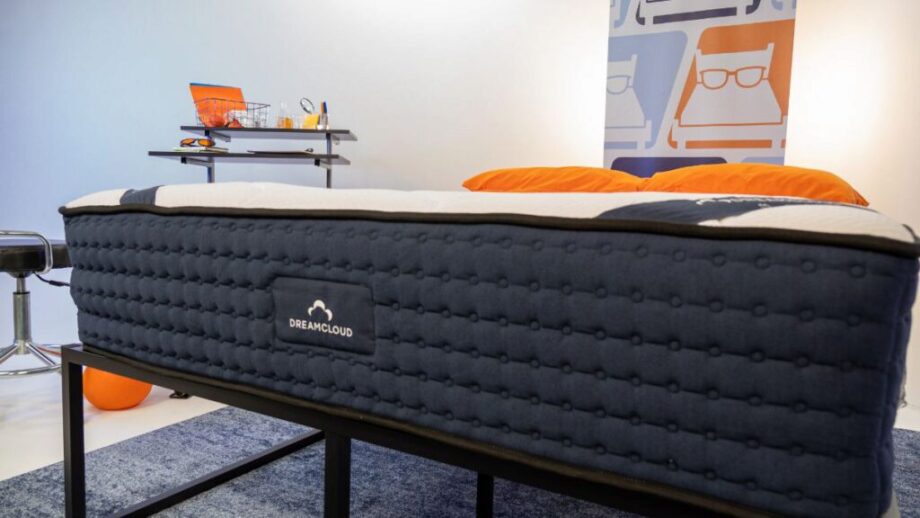
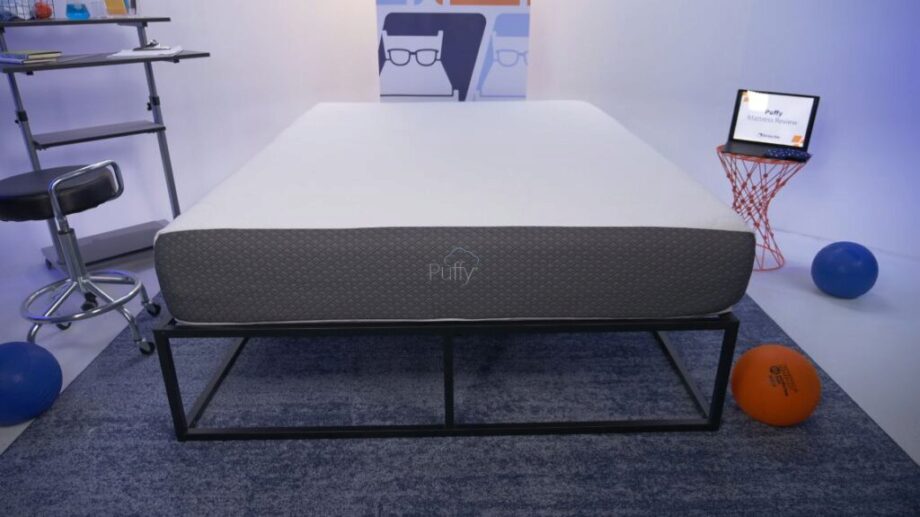
Our Mattress Nerd firmness scale ranges from 1 to 10, where 1 is the softest and 10 is hard as cement. These two mattresses have quite a difference in feel and firmness, depending on your weight and preferred sleeping position.
Scoring 6.5/10 on our firmness scale, the medium-firm DreamCloud performs well for back sleepers of all sizes, as well as stomach sleepers under 230 lbs. Lightweight side sleepers may not sink into the mattress enough to experience pressure relief, but sleepers weighing more than 130 lbs should be okay with this firmness.
In contrast, the all-foam Puffy scored 5.5/10 which is considered a true neutral. This softer mattress is a great fit for lightweight sleepers, and even average-weight sleepers will experience pressure relief and support. It doesn’t keep your spine in healthy alignment, however, if you are a heavyweight sleeper (>230 lbs).
The DreamCloud’s cashmere cover is soft and cloud-like for a soft feel while sleeping. The mattress feels like a true hybrid mattress—you are first cushioned by the foam layers before arriving at the support of the coil layer. Our testers felt like they were resting “on” the mattress vs. sinking into it.
The softer Puffy is also reasonably supportive and responsive, especially for foam. We noticed it nicely cradles the body, while also having the sensation that you’re on top of the mattress rather than sinking into it feel.
Body weight and preferred sleeping position are two key factors when mattress shopping. These two mattresses very clearly address opposite types of sleepers. If you’re primarily a back sleeper (of any size) and can afford the extra bucks, you’ll notice the DreamCloud’s superior support of your spine. Stomach sleepers under 230 lbs will also appreciate the 5/5 score for this position. And with reasonable scores for most side sleepers, this versatility makes it a good pick for combination sleepers or couples.
At the other end of the spectrum, the Puffy is a great pick for side sleepers weighing less than 230 lbs, though it didn’t quite make our list of best mattresses for side sleepers. Additionally, it scored decently for back and stomach sleepers, though we don’t recommend it for heavy people.
| Body Type: | BACK SLEEPERS | STOMACH SLEEPERS | SIDE SLEEPERS |
| Lightweight (< 130 lbs): | 5 | 5 | 2 |
| Average weight (130 – 230 lbs): | 5 | 5 | 3.5 |
| Heavyweight (> 230 lbs): | 5 | 2 | 4 |
| Body Type: | BACK SLEEPERS | STOMACH SLEEPERS | SIDE SLEEPERS |
| Lightweight (< 130 lbs): | 4 | 3 | 5 |
| Average weight (130 – 230 lbs): | 3 | 3 | 4 |
| Heavyweight (> 230 lbs): | 2 | 2 | 3 |
1 = Very poor, 2 = Not good, 3 = Fair, 4 = Good, 5 = Excellent
The firmer DreamCloud has most everything needed for average-weight back and stomach sleepers—the Hybrid helps keep your hips elevated to avoid causing lower back pain. Even if you switch to your side for a little each night, you should still be reasonably happy with the contour of the gel-infused foam layer.
If you prefer your back or stomach, Puffy cradles your body while giving adequate support, though stomach sleepers might like a little more firmness to ensure your hips stay elevated. Side sleepers in this weight category will feel excellent pressure relief in your hips and shoulders, plus enough support to keep your spine aligned.
The DreamCloud’s support layer of individually wrapped coils holds up quite well if you prefer your back, side, or a combination of the two. In fact, it made our list of the best mattresses for heavy people. Stomach sleepers over 230 lbs need a firmer mattress that will keep your hips elevated. The all-foam Puffy mattress is too soft to provide for the needs of sleepers in this weight category.
Back and stomach sleepers weighing less than 130 lbs will appreciate the contouring and support provided by the DreamCloud. We gave it perfect marks. Side sleepers won’t sink enough into the foam layer to find enough pressure relief for joints like shoulders and hips. A softer mattress will be a better bet for those folks.
This is the sleeper that the Puffy mattress will impress the most. The comfort layer is soft enough for lightweight sleepers to sink in and feel the benefits of pressure relief, as well as the support of the denser foam base. No matter your favorite sleeping position, you’ll likely find just what you need in the Puffy.
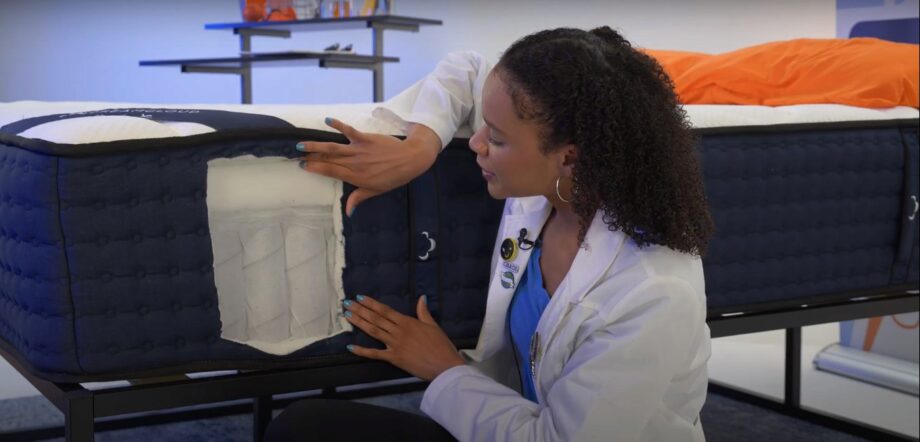
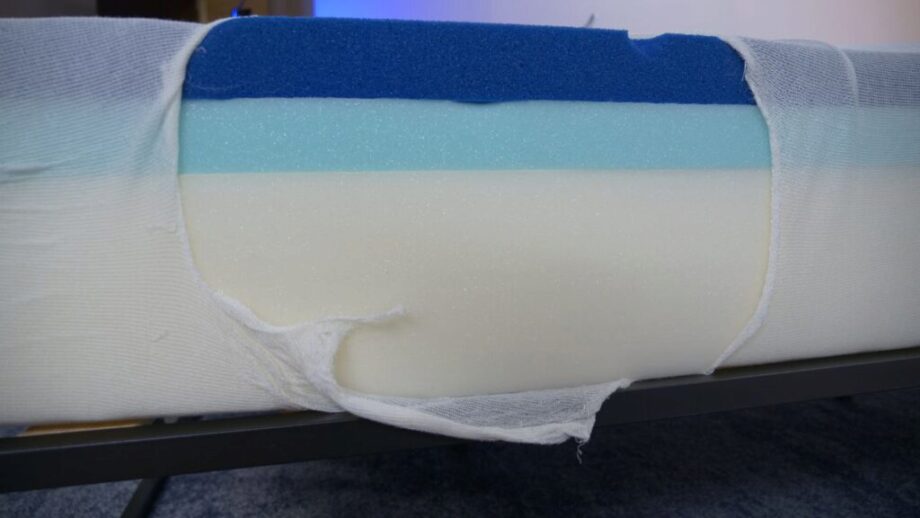
Measuring 14” in height, the DreamCloud is a reasonably thick mattress made from multiple layers of foam atop coils. The Puffy is a much shorter 10″ with three layers of foam.
| DreamCloud Mattress Materials | Puffy Mattress Materials |
| Quilted Cover (foam and cashmere blend) | Stain-resistant, Hypoallergenic Cover (polyester) |
| Gel-infused Memory Foam | Gel-infused Foam (2″) |
| Foam Transition Layer | Humidity-resistant Foam (2″) |
| Support Coils (individually wrapped steel coils) | High-density Foam (6″) |
The cover truly is soft and dreamy in terms of feel. The DreamCloud cover feels like cashmere blended with foam. It’s almost a shame to cover it with sheets. The Puffy cover is made of polyester, so it is thin and has some stretch to it.
Older memory foam mattresses used heat from your body to create contouring of the foam which led to a hotter night of sleep. The comfort layer of both the DreamCloud and Puffy consists of gel-infused memory foam, designed to draw heat away while still cushioning your body.
This is where the biggest difference lies: coils versus foam. The medium-firm DreamCloud has a coil layer that is sandwiched between foam layers providing a transition so you don’t sink into the coils themselves. The softer Puffy has a high-density foam layer at the base, which is pretty standard for all-foam mattresses. This is to help with stability and durability.
| Size | DreamCloud Prices | Puffy Prices |
| Twin | $839.00 | $2099.00 |
| Twin XL | $1089.00 | $2099.00 |
| Full | $1199.00 | $2249.00 |
| Queen | $1332.00 | $2399.00 |
| King | $1669.00 | $2599.00 |
| California King | $1669.00 | $2599.00 |
For exclusive discounts on both beds see our Best Mattress Deals of 2025.
If you ever wake up sweaty, you might be a hot sleeper. All-foam beds have a reputation for trapping heat and the Puffy is no exception. While its design includes a few features like gel-infused foam and humidity-resistant foam, you’re better off choosing a hybrid like the DreamCloud. The coil support layer increases airflow which makes for a cooler night’s sleep. Also check out our list of best cooling mattresses. DreamCloud’s Premier mattress made the list.
Despite having a coil base layer, the DreamCloud’s other foam layers create great motion isolation. So if you sleep with a partner, pet, or child, their movement shouldn’t reach you on your side. When our testers bounced the Lacrosse ball on the surface of the Puffy, it was surprisingly more responsive than the average foam mattress which is why it scored about average in this category.
What is edge support and who needs it?
Our testers felt very supported on the edge of the DreamCloud Original, and it even made our list of best mattresses for seniors. The softer Puffy scored average in this area, though our testers felt supported when lying on the edge—it’s just not as firm when sitting on the edge.
Average-weight and heavyweight sleepers find contouring cushioning in the DreamCloud which provides pressure relief for your points of contact with the mattress. Lightweight sleepers may need a less firm mattress to get the pressure relief they need.
The Puffy’s foam layers create a cloud-like surface that helps with pressure relief for most sleepers, though we don’t recommend it for heavyweight sleepers.
Back pain can sometimes be caused by a mattress that doesn’t support the curve of your spine. The DreamCloud made our list as one of the best mattresses for back pain if you sleep on your stomach and weigh less than 230 lbs as it provides back support no matter your weight.
Back and side sleepers should find pressure relief and support on the Puffy, though stomach sleepers will want a firmer mattress to keep their hips elevated.
The hybrid DreamCloud’s foam and coil construction might last a little longer than the all-foam Puffy. But both mattresses should easily make it to the 7-year mark, which is a good time to replace your mattress anyway.
Shipping is free in the contiguous U.S. and only an additional $150 for Alaska and Hawaii. DreamCloud offers a 365-night sleep trial period with a full refund available. There’s also a generous, non-prorated lifetime warranty for normal wear, defined as permanent body impressions over 1.5”.
The Puffy is made in the U.S. and ships for free with an extra fee for Alaska and Hawaii. You also get a 101-night sleep trial period with a full refund if you’re not fully satisfied. And just like DreamCloud, there’s a non-prorated lifetime warranty which is great security when buying a bed-in-a-box mattress.
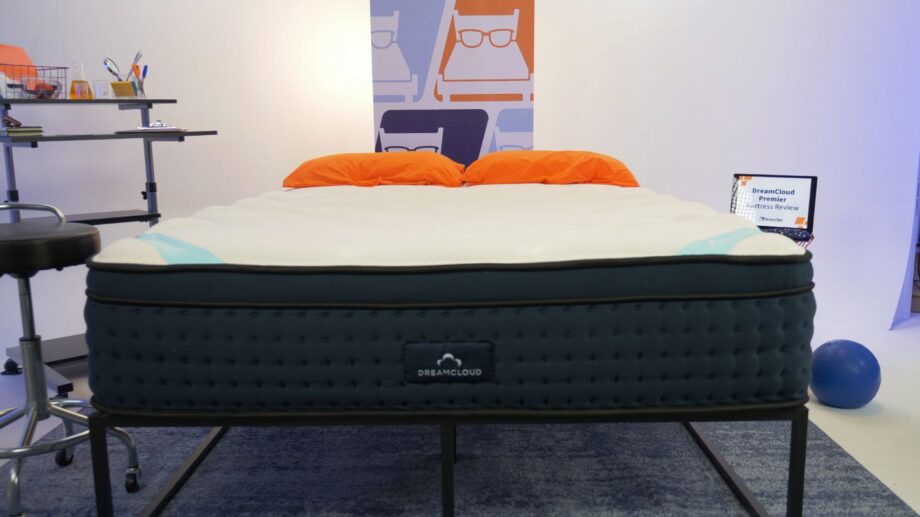
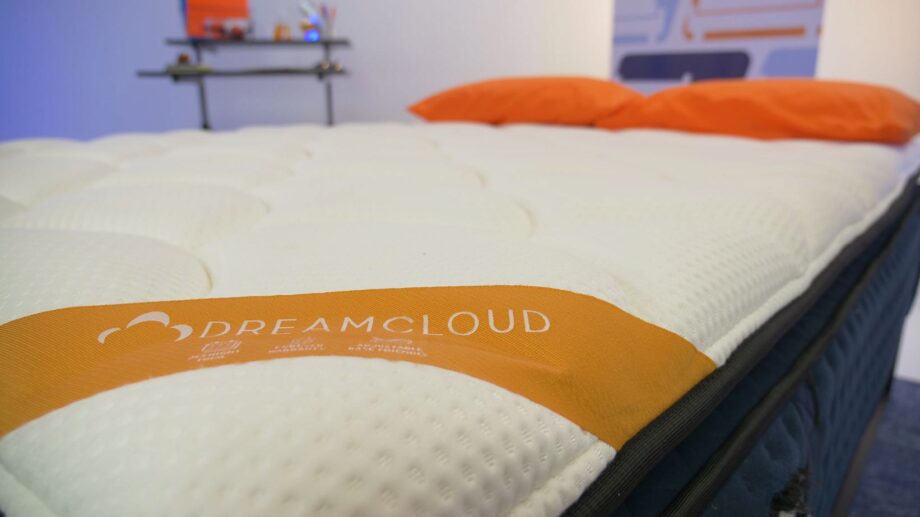
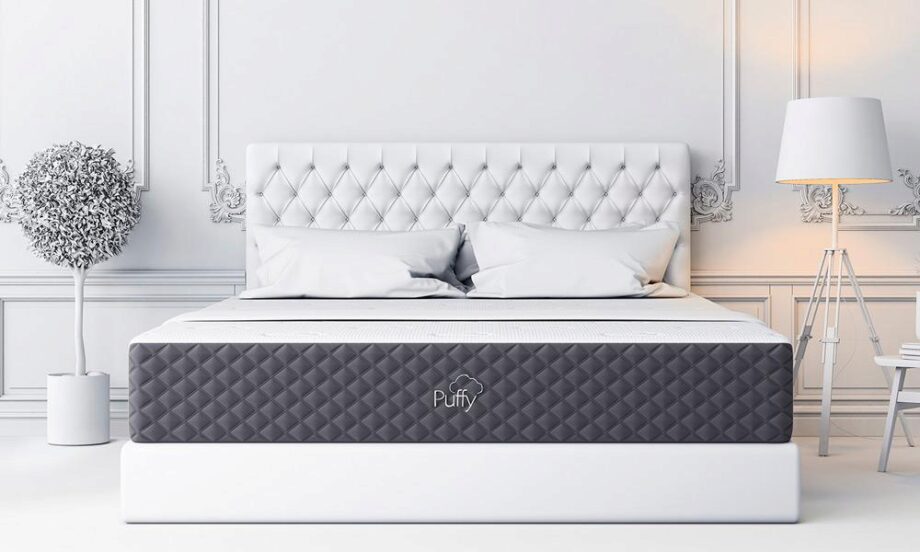
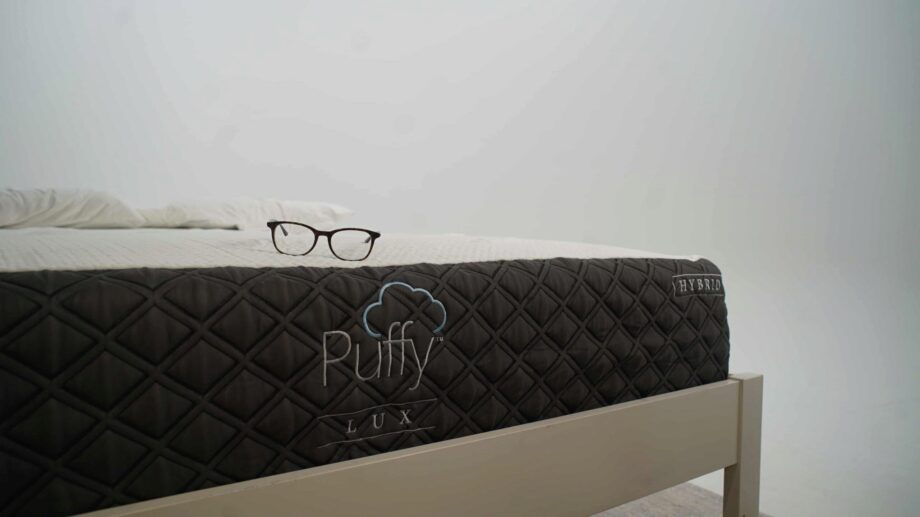
The DreamCloud should exceed expectations for shoppers who sleep on their back (no matter their weight), as well as stomach sleepers weighing less than 230 lbs. It will also appeal to couples because of its motion isolation, temperature control, and bounce. With a more affordable price tag, Puffy delivers pressure relief and responsiveness for those weighing less than 230 lbs and is especially “puffy” for side sleepers who will appreciate the cushioning of your hips and shoulders.
The DreamCloud scored above-average for durability. Individually-wrapped coils are some of the most durable mattress materials out there, so this luxury mattress is a good investment. It’ll serve you well for around 10 years. And if for some reason it doesn’t, the company backs their quality with a lifetime warranty.
The Puffy is made with several layers of foam that should last 5-6 years before sagging or showing lasting body impressions. The mattress has a generous non-prorated lifetime warranty which covers permanent body impressions over 1.5″. The warranty doesn’t cover gradual softening (which every mattress does).
This is a great question since the DreamCloud is in the luxury ($$$$) price range. There’s not a one-size-fits-all solution when mattress shopping. It all depends on your weight and preferred sleeping position. The DreamCloud is a good match for hot sleepers, couples, and back sleepers.